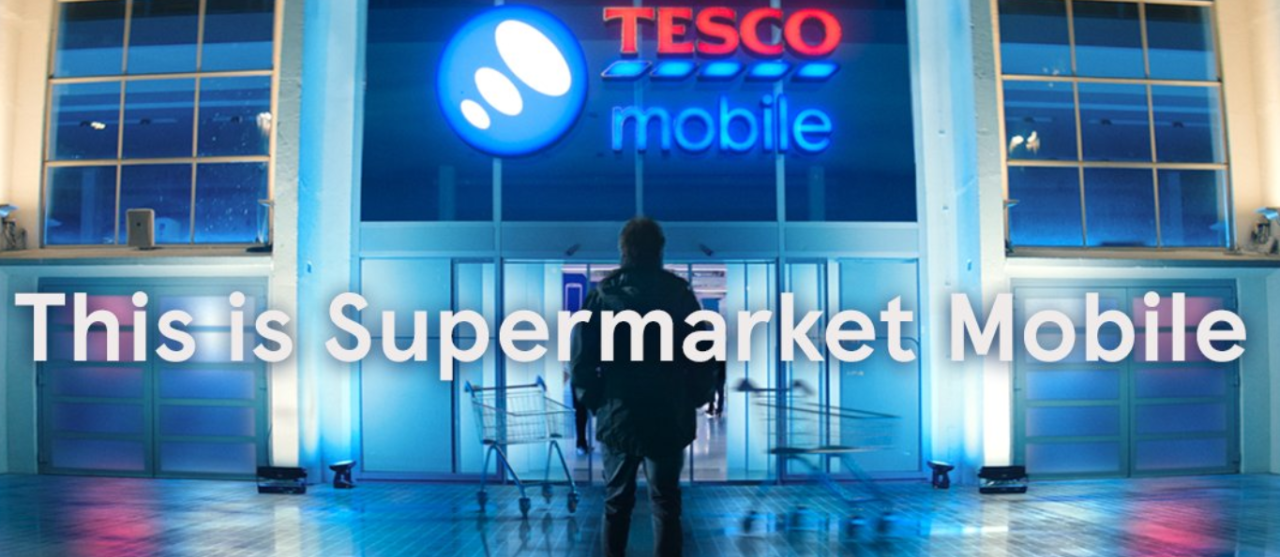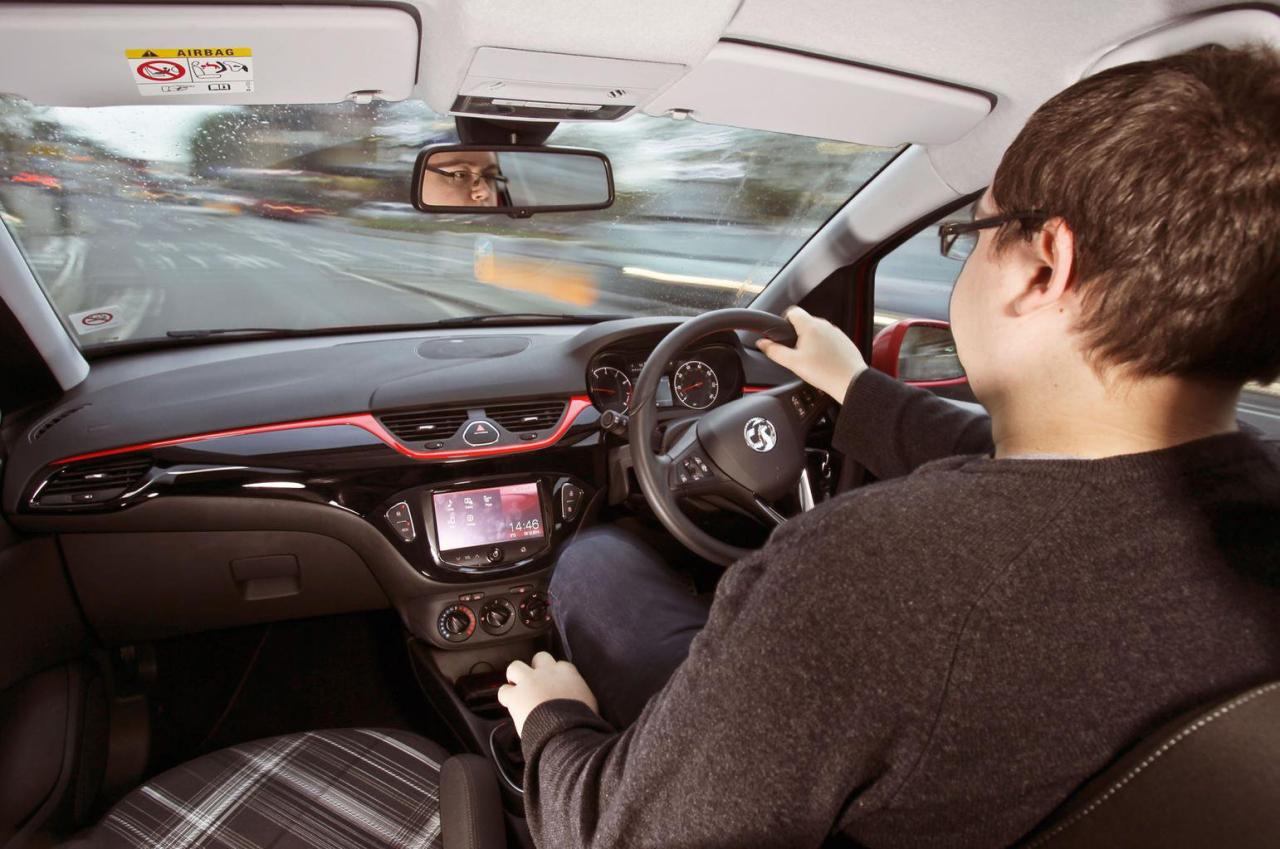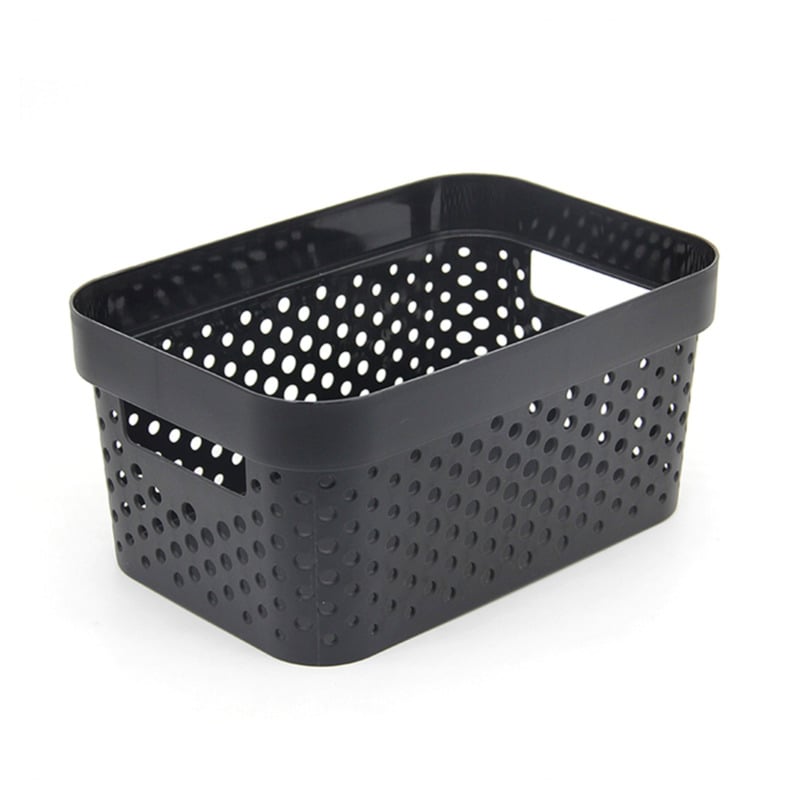Tesco Black Box represents a significant shift in retail operations, promising efficiency and streamlined processes. This innovative system aims to revolutionize everything from store management to customer experiences, offering a glimpse into the future of shopping. It’s a complex technology, but understanding its intricacies is crucial for anyone involved in the retail sector.
This analysis delves into the Tesco Black Box, exploring its core functionalities, customer impact, operational aspects, and potential future implications. We’ll examine its features, compare it to competitors, and assess its potential impact on the retail landscape.
Tesco Black Box Overview
The Tesco Black Box is a proprietary system designed to streamline and optimize various aspects of Tesco’s operations. It leverages advanced data analytics and machine learning algorithms to make informed decisions, ultimately aiming to enhance efficiency and customer experience. This approach allows Tesco to adapt to evolving market trends and consumer demands more effectively.
The general purpose of the Tesco Black Box is to provide data-driven insights across different business functions. This includes supply chain management, inventory control, pricing strategies, marketing campaigns, and customer service. The intended use cases encompass predictive modeling for demand forecasting, real-time adjustments to optimize stock levels, and personalized recommendations to enhance customer satisfaction.
Concept and Purpose
The Tesco Black Box concept centers on aggregating and analyzing vast amounts of data from diverse sources within Tesco’s ecosystem. This encompasses internal data like sales figures, inventory levels, and customer interactions, as well as external data from market trends and competitor activities. This integrated approach allows for a holistic view of the business environment, enabling data-driven decisions across multiple departments.
Key Features and Functionalities
- Data Aggregation and Processing: The system integrates and processes data from multiple sources, including internal databases, external market research, and real-time point-of-sale data. This ensures a comprehensive view of the business environment.
- Predictive Modeling: The Black Box utilizes machine learning algorithms to create predictive models. These models forecast demand, identify potential risks, and anticipate future trends. For example, accurately predicting seasonal product demand allows Tesco to optimize inventory levels, reducing waste and ensuring product availability.
- Real-time Optimization: The system provides real-time insights and allows for dynamic adjustments to operational parameters. This enables Tesco to react quickly to changing market conditions, for example, responding to sudden spikes in demand for specific products. This capability allows for agile adjustments in pricing and promotions.
- Personalized Recommendations: The Black Box facilitates the creation of personalized recommendations for customers based on their past purchase history and preferences. This enhances the customer experience and increases the likelihood of repeat purchases. An example would be suggesting complementary products based on previous purchases.
Historical Context and Evolution
The Tesco Black Box is a relatively recent development within Tesco’s technological infrastructure. It represents a significant shift towards data-driven decision-making, building on previous initiatives to leverage data analytics for operational efficiency. The evolution of the Black Box reflects Tesco’s ongoing commitment to adopting advanced technologies to meet the ever-changing demands of the retail landscape. No specific historical timeline is publicly available.
Infographic: Tesco Black Box
| Component | Description |
|---|---|
| Data Sources | Internal (sales, inventory, customer data) and external (market trends, competitor activity). |
| Processing Engine | Sophisticated algorithms and machine learning models analyze data. |
| Predictive Models | Forecasts demand, identifies risks, and anticipates trends. |
| Real-time Optimization | Dynamic adjustments to pricing, promotions, and inventory based on insights. |
| Personalized Recommendations | Tailored product suggestions to enhance customer experience. |
This table illustrates the key components of the Tesco Black Box system, providing a visual representation of its data-driven approach to optimization.
Tesco Black Box Customer Perspective
The Tesco Black Box represents a novel approach to grocery shopping, prompting a range of potential customer responses. Understanding these perspectives is crucial for Tesco’s success in the market. This section explores the perceived advantages and disadvantages from a customer’s viewpoint, comparing the service to alternatives and identifying target customer groups.
Perceived Benefits and Drawbacks
Customers may perceive the Tesco Black Box as a convenient and potentially cost-effective solution for grocery shopping. The automated nature of the system could lead to quicker checkout times and reduced reliance on human staff, offering potential savings on labor costs. However, drawbacks include a potential lack of personalized service, the need for a degree of technological literacy, and concerns about data privacy and security. The absence of physical interaction with staff could also be a disadvantage for some customers. Additionally, the initial setup or learning curve might be challenging for less tech-savvy customers.
Comparison with Alternative Solutions
The Tesco Black Box differentiates itself from traditional grocery shopping by automating the checkout process. Compared to other automated checkout systems, it might offer greater convenience and potentially lower prices due to the elimination of staff interaction. However, compared to traditional supermarkets with human checkout, the Tesco Black Box lacks the personal touch and potentially greater flexibility offered by a human cashier. It also differs from online grocery delivery services in that it’s a physical, in-store experience.
Potential Customer Segments
The Tesco Black Box likely appeals to customers who value convenience and efficiency, particularly those comfortable with technology and seeking streamlined shopping experiences. Conversely, customers who prefer the personalized service of a human cashier or are less comfortable with technology may find the Tesco Black Box less appealing. Younger generations, tech-savvy individuals, and busy professionals might be more receptive to the service. Conversely, older generations or those with less familiarity with technology might face more challenges.
Customer Experience
The customer experience with the Tesco Black Box hinges on the seamlessness of the technology. A smooth and intuitive user interface, clear instructions, and readily available support will enhance the positive customer experience. Conversely, technical glitches, confusing instructions, or limited support staff can negatively affect the experience. Potential queues for the system are a critical factor to consider in the customer experience, which should be addressed.
Comparison Table
| Feature | Tesco Black Box | Competitor A | Competitor B |
|---|---|---|---|
| Pricing | Potentially lower due to reduced labor costs. | Variable pricing based on service level. | Competitive pricing with emphasis on volume discounts. |
| Ease of Use | Dependent on user familiarity with technology. Potential for a learning curve. | Generally user-friendly interface, but may vary. | Simple interface, but limited customization options. |
| Customer Support | May require online support or limited in-store assistance. | Extensive online support and potentially dedicated phone lines. | Limited support, primarily through FAQs and online forums. |
Tesco Black Box Operational Aspects

The Tesco Black Box, a crucial component of Tesco’s operations, requires meticulous internal processes and robust technical infrastructure. Understanding these aspects provides insight into the system’s efficiency and security. This section details the operational workings of the Black Box, from internal procedures to data handling and security protocols.
Internal Processes and Procedures
The Tesco Black Box’s internal processes are designed for streamlined data collection and analysis. These procedures are crucial for the system’s efficiency. Data is collected from various sources, processed, and analyzed to provide actionable insights for Tesco. Rigorous quality checks are implemented at each stage to maintain data integrity. A key element is the automated data validation process to ensure the accuracy of information inputted into the system.
Technical Infrastructure
The technical infrastructure supporting the Tesco Black Box is a complex network of servers, databases, and software applications. It is designed to handle high volumes of data efficiently and reliably. This infrastructure is built with high availability in mind, ensuring minimal downtime and maximizing the system’s uptime. The system utilizes cloud-based storage solutions for scalability and accessibility.
Data Handling and Security Protocols
Robust data handling and security protocols are paramount to the Tesco Black Box. Data encryption techniques are employed throughout the system to safeguard sensitive information. Access controls and authentication mechanisms are implemented to restrict access to authorized personnel only. Regular security audits and penetration testing are performed to identify and mitigate potential vulnerabilities.
Roles and Responsibilities
Several roles are involved in managing the Tesco Black Box, each with distinct responsibilities. Data analysts are responsible for extracting and interpreting data from the system. IT professionals maintain the technical infrastructure and ensure its smooth functioning. Security personnel oversee the data security protocols and compliance with regulations. Project managers oversee the overall operation of the Black Box and coordinate activities across various teams.
Key Steps in the Tesco Black Box Process
The following flowchart illustrates the key steps involved in the Tesco Black Box process. Understanding this process is vital to appreciating the system’s operation and its contribution to Tesco’s decision-making.
Start --> Data Collection --> Data Validation --> Data Processing --> Data Analysis --> Reporting --> Feedback Loop --> End
Tesco Black Box Future Implications
The Tesco Black Box, a novel approach to retail operations, presents significant opportunities and challenges for the future of the retail industry. Understanding its potential impact on both Tesco and the broader market is crucial for strategic planning. This section explores the likely implications, highlighting areas for innovation, ethical considerations, and potential risks.
Potential Impact on the Retail Industry
The Tesco Black Box, with its emphasis on data-driven optimization and automation, could reshape the retail landscape. Its ability to dynamically adjust pricing, stock levels, and store layouts based on real-time data offers a significant competitive edge. This data-driven approach could lead to increased efficiency and potentially lower prices for consumers, while also influencing competitors to adopt similar strategies. However, concerns regarding the potential for increased price fluctuations and reduced consumer choice must be addressed.
Innovation and Improvement Potential
The Black Box architecture offers considerable scope for innovation. Further integration with other technologies, such as IoT devices and advanced AI algorithms, could enhance its functionality. For example, real-time data analysis could allow for personalized product recommendations, tailored promotions, and proactive inventory management. Improving the user interface and experience for both customers and store staff could further enhance the effectiveness of the Black Box.
Ethical Considerations
Ethical considerations are paramount. Data privacy and security are crucial concerns. The Black Box’s reliance on vast amounts of customer data necessitates robust security measures to protect sensitive information from breaches. Transparency in data usage and algorithmic decision-making is essential to build consumer trust. Furthermore, ensuring fair treatment of employees in a highly automated environment is critical.
Challenges and Risks
Potential challenges include the significant upfront investment required for implementation and the potential for unforeseen operational disruptions during the transition to a more automated system. The complexity of the system may also pose a challenge for maintenance and troubleshooting. Another risk is the potential for unintended consequences arising from the Black Box’s algorithms, particularly if not properly vetted and tested. This requires careful consideration of the potential for bias and discriminatory outcomes.
Potential Future Developments and Implications
| Potential Development | Positive Impact | Negative Impact |
|---|---|---|
| Increased automation | Reduced labor costs, improved efficiency, 24/7 operation, potential for reduced prices. | Job displacement, potential for system failures, increased dependence on technology, reduced human interaction in the retail experience. |
| Integration with other systems | Enhanced customer experience (personalized recommendations, tailored promotions), improved supply chain management, data-driven insights across the entire business. | Increased complexity of the system, potential security risks from interconnectivity, dependence on external systems. |
| New customer interfaces | Enhanced convenience for customers, personalized shopping experience, streamlined checkout process, data collection to personalize offers. | Potential for user confusion or difficulty using new systems, dependence on technology, potential for a shift away from traditional customer interaction. |
Tesco Black Box Case Studies

The Tesco Black Box, a powerful data analytics tool, has been instrumental in shaping Tesco’s operations. Understanding its successful applications and potential pitfalls provides valuable insights into its effectiveness and the broader impact of similar technologies on retail businesses. This section explores various case studies, highlighting both positive outcomes and lessons learned.
Successful Implementations
The Tesco Black Box has shown remarkable potential in optimizing various aspects of Tesco’s operations. These positive outcomes have often stemmed from the system’s ability to process vast amounts of data, leading to actionable insights that drive improvements. A key aspect of its success is the effective integration of the Black Box with existing business processes.
- Case Study 1: Increased Efficiency in Store Management: The Black Box facilitated real-time analysis of sales data, inventory levels, and customer traffic patterns within individual stores. This allowed managers to proactively adjust staffing levels, optimize product placement, and anticipate demand fluctuations, resulting in reduced waste and improved operational efficiency. For instance, by analyzing the correlation between specific product displays and sales, Tesco could fine-tune its store layouts for optimal customer engagement.
- Case Study 2: Improved Customer Experience in Online Shopping: By analyzing customer browsing history and purchase patterns, the Black Box helped tailor product recommendations and personalize the online shopping experience. This resulted in higher conversion rates and increased customer satisfaction. Further, the system identified popular products and optimized website navigation to improve user experience, leading to more seamless transactions.
- Case Study 3: Streamlined Supply Chain Operations: The Black Box’s ability to predict demand fluctuations across various product categories allowed Tesco to optimize its supply chain. This involved adjusting inventory levels in real-time, minimizing storage costs, and reducing stockouts, ultimately improving the speed and efficiency of product delivery.
Potential Failures and Issues
Despite its potential, the Tesco Black Box, like any complex system, has faced challenges. Understanding these issues is crucial for developing strategies to mitigate them. One key area of concern has been the need for robust data security protocols to protect sensitive customer information. Also, proper training and support for employees are essential to ensure effective utilization of the system’s capabilities.
Lessons Learned
Several lessons have emerged from Tesco’s experience with the Black Box. One key takeaway is the importance of comprehensive data quality and accuracy. Inaccurate or incomplete data can lead to flawed insights and ineffective decision-making. Furthermore, the Black Box’s success hinges on clear communication and collaboration between different departments. Ensuring seamless data flow and coordinated efforts between sales, marketing, and supply chain teams is crucial.
Impact on Business Processes
The Tesco Black Box has dramatically reshaped various business processes. The system has transitioned from a reactive to a proactive approach to inventory management, customer service, and supply chain optimization. It has allowed for dynamic adjustments in response to changing market conditions, customer preferences, and operational needs.
Last Recap

In conclusion, Tesco Black Box presents a compelling opportunity for retail innovation, but also introduces potential challenges and ethical considerations. The future of retail likely depends on successfully integrating these new technologies while addressing the concerns surrounding customer experience, data security, and potential job displacement. Further exploration into case studies and real-world implementations will be crucial to fully understanding the long-term success and impact of Tesco Black Box.
Commonly Asked Questions
What are the security protocols for Tesco Black Box data?
Tesco has not yet publicly disclosed the specific security protocols. However, industry-standard encryption and access controls are likely employed to protect customer and operational data.
How does Tesco Black Box integrate with existing store systems?
The Artikel doesn’t detail integration specifics. A successful implementation would require careful planning and robust interfaces to avoid system conflicts and maintain data integrity.
What are the potential cost savings associated with Tesco Black Box?
The Artikel doesn’t contain a cost analysis. Savings would likely stem from improved operational efficiency, reduced labor costs, and potentially, lower inventory management expenses.
The Tesco Black Box system, while primarily focused on driver behaviour, can indirectly influence accident insurance. Drivers with good records, potentially tracked by the system, might find themselves eligible for discounted premiums linked to accident insurance. Ultimately, the Tesco Black Box’s impact on overall road safety and associated insurance costs is a complex issue.
The Tesco Black Box system, while primarily focused on driver behaviour, can indirectly influence accident insurance. Drivers with good records, potentially tracked by the system, might find themselves eligible for discounted premiums linked to accident insurance. Ultimately, the Tesco Black Box’s impact on overall road safety and associated insurance costs is a complex issue.
The Tesco Black Box system, while primarily focused on driver behaviour, can indirectly influence accident insurance. Drivers with good records, potentially tracked by the system, might find themselves eligible for discounted premiums linked to accident insurance. Ultimately, the Tesco Black Box’s impact on overall road safety and associated insurance costs is a complex issue.

